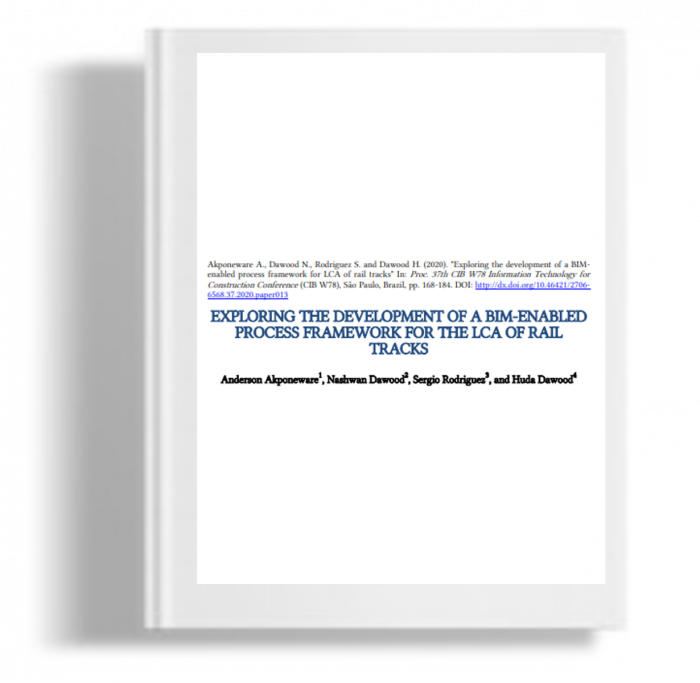Kami menggunakan cookies untuk membuat pengalaman Anda lebih baik. Untuk mematuhi petunjuk e-Pribadi yang baru, kami perlu meminta persetujuan Anda untuk menyetel cookies. Pelajari lebih lanjut .
Exploring the Development of a BIM- Enabled process Framework for the LCA of Rail Tracks
A key 21st century infrastructure challenge is lowering cost and carbon over an infrastructure’s whole lifecycle. But, accounting for the carbon footprint of a railway system is problematic due to the complexity of railway systems. Within the rail sector, there is still a lack of infrastructure frameworks which can accurately capture actions, interactions and associated processes by role actors during lifecycle analysis. Whilst there is increased focus to facilitate information digitisation in railway systems, there is a scarcity of literature which attempt to systematise and formalise the process of conducting lifecycle analysis (LCA) of railway systems. This paper identifies complexities associated with legacy LCA methodologies in the rail sector. It then proposes a methodology which applies design science techniques to facilitate the creation and re-use of information and data in a systematic way within a structured process workflow. The proposed methodology enables lifecycle information for a rail-track to be produced collaboratively in an integrated format. In addition, the proposed LCA technique allows the creation of LCA process workflows which can be deployed to the web, potentially integrating with other optioneering applications and BIM platforms.
A key 21st century infrastructure challenge is lowering cost and carbon over an infrastructure’s whole lifecycle. But, accounting for the carbon footprint of a railway system is problematic due to the complexity of railway systems. Within the rail sector, there is still a lack of infrastructure frameworks which can accurately capture actions, interactions and associated processes by role actors during lifecycle analysis. Whilst there is increased focus to facilitate information digitisation in railway systems, there is a scarcity of literature which attempt to systematise and formalise the process of conducting lifecycle analysis (LCA) of railway systems. This paper identifies complexities associated with legacy LCA methodologies in the rail sector. It then proposes a methodology which applies design science techniques to facilitate the creation and re-use of information and data in a systematic way within a structured process workflow. The proposed methodology enables lifecycle information for a rail-track to be produced collaboratively in an integrated format. In addition, the proposed LCA technique allows the creation of LCA process workflows which can be deployed to the web, potentially integrating with other optioneering applications and BIM platforms.

